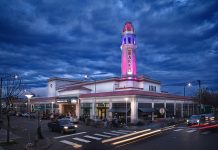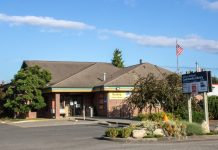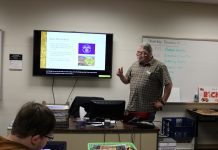When a storm is raging outside, sometimes everything goes dark inside, leaving you without electricity, connection, entertainment and heat. Fortunately, a dedicated group of men and women spring into action when your lights go out – but rectifying the issue is often not as simple as it might seem.
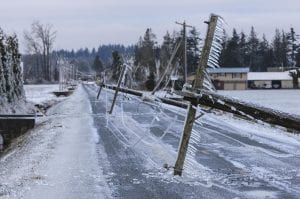
“My mission is to help customers understand that we can’t just flip a switch to turn the power back on,” says Lynn Murphy, Local Government Affairs for Puget Sound Energy (PSE). “When storms come through, we have trees down, we have snow and we have to put the poles and wires back up – and putting poles and wire back up can take hours.”
If you live in Western Washington, odds are that you get electricity from PSE in your home. Unlike other services, PSE is unique in the minimal amount of contact customers have with the company.
Except for a friendly voice on the line when you first connect your service, you might never have another interaction with your energy company. Pay your bill online and everything is great, unless you have an outage. Little do you realize that there’s a small army of employees often working overtime, through the night, outdoors in the snow and ice to keep your lights on.
Energy for PSE is generated from solar power, wind power, hydroelectric dams and turbines powered with natural gas.

From there, it travels down high voltage transmission lines to one of several substations where the energy is converted into lower voltages. This is then carried down a distribution power line to transformers.
Transformers are located in large cylindrical cans on power poles or in big green boxes sometimes in a customer’s front yard. They lower the voltage yet again to a final 120 volts that then travels through service lines to your home.
We rarely think about electricity. But then, one day you’re sitting in your cushy lounge chair watching your favorite program when you hear a puh from the television turning off unexpectedly. The lights go out and the house instantly falls dark and silent.
You then have three options: get out the PSE app on your phone, look at the PSE outage map online, or call in to report your address to an operator. But then what? How does PSE keep the lights on for over one million customers during a storm?
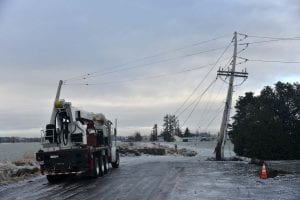
When PSE is experiencing a high number of outages over Skagit, Whatcom and Whidbey Island, they open up a storm base and get in teams called damage assessors. “These are teams of two that go to potential outage locations,” Murphy explains.
The damage assessors report the damage they see in the field and the storm base will than estimate the amount of time, equipment and number of crews it will take to restore power for broken poles, downed wires, fallen trees or multiple poles on the ground, often requiring a crew of three or four people for each repair.
If there’s a large amount of damage and multiple outages across the territory, a storm room or base will open. There are 10+ storm bases across PSE’s territory. These rooms have access to maps with area roads, substations and important electrical information. Here, a team of staff members hunker down and field calls from damage assessors, service men and crews in the field repairing damaged lines.
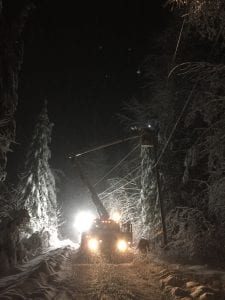
In the storm room, employees like Matt McGraw, electric first response supervisor, decide which lines to restore first.
The damage is prioritized by which repairs will bring power to the most people. Critical resources are first – hospitals, fire stations, and sewer and pump stations. Next are repairs affecting the largest numbers of customers. “If we have a large amount of damage to a specific area that would restore 2,500 to 3,000 customers, that would be the first to be restored,” says Murphy. “We always start from the source of the power before restoring power to our customers. If they restored power and there was a problem [at the source], they might need to de-energize/turn power off to make repairs.”
A thoughtful, well-planned response is essential. “We want to make sure there’s nothing wrong with the generation source, then the transmission to the substation, and then distribution,” says Murphy.
But what about really big storms? “At some point, if there are so many outages occurring across the entire service territory and there are lots of storm bases opening up, we open up the emergency coordination center in Redmond,” says Murphy. “It’s PSE’s dedicated logistics center; more crews, more damage assessors, food, hotels for servicemen and crews that are out working for more than 24 hours. Many of the storms can affect schools and businesses, so we’ll communicate what needs to be done to reopen schools.”

Even in the worst storms, PSE focuses on what’s most important for the community and how to restore the largest number of customers the fastest.
Sometimes, things just take time. “One pole could take eight hours and if 50 poles are on the ground and you do the math, that’s days,” says Jon Backman, PSE serviceman.
The weather is also a contributing factor to repairs. When the ground is frozen, it can be impossible to replace downed poles, sometimes causing power to be down for several days. In rural portions in the county, servicemen sometimes put wire back up just to have the wind blow it right back down again.
“We work really hard to get our customers back in power,” says Murphy. It often takes teams of servicemen working through the night in freezing conditions to accomplish, but the PSE team does what it takes.
Hats off to the hard-working men and women behind our furnaces, fighting the ice and darkness to keep us and our families safe and warm.
Check the outage map or the PSE app at any time to locate outages in the region. Download the PSE app for notifications and estimated power restoration times for your home.
Sponsored











